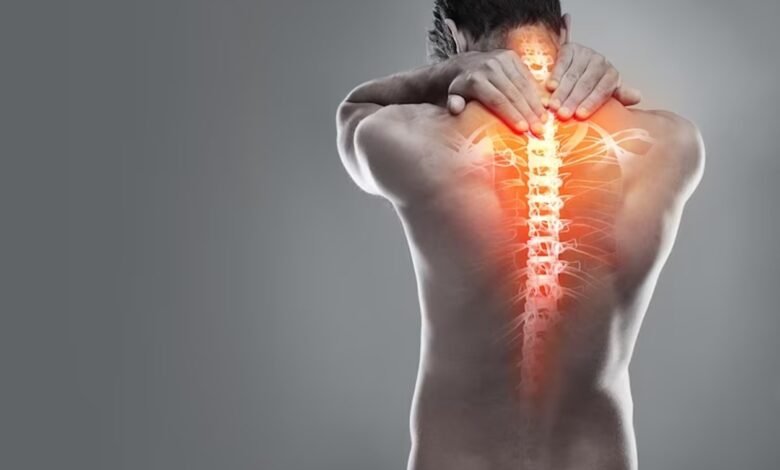Top 10 Causes of Bone Pain and How to Treat Them

In today’s fast-paced world, it’s not uncommon for many of us to experience occasional bone pain. Whether it’s a dull ache or a sharp twinge, bone pain can be disruptive and uncomfortable. Understanding the underlying causes of bone pain is essential for effective treatment and management. In this comprehensive guide, we’ll explore the top 10 causes of bone pain and provide insights on how to treat them.
Causes of Bone Pain
Bone pain can affect anyone, regardless of age or gender. It can be a result of various underlying factors, from common issues like muscle strain to more severe conditions like cancer. Understanding the causes is the first step in finding relief.
Muscle Strain and Overuse
Causes of Bone Pain: Muscle strain and overuse are prevalent reasons for experiencing bone pain. When you engage in activities that push your muscles beyond their limits, it can result in discomfort that may radiate to the adjacent bones. This type of bone pain is often localized and can vary in intensity.
Causes of Muscle Strain and Overuse:
Physical Activity: Engaging in strenuous physical activities, such as weightlifting, running, or playing sports, without proper warm-up or excessive repetition, can strain the muscles and subsequently cause bone pain.
Poor Posture: Maintaining an incorrect posture, especially for extended periods, puts added stress on muscles and can lead to discomfort in nearby bones.
Muscle Imbalance: When some muscles are significantly stronger than others, it can result in an imbalance that affects how they interact with the bones, potentially causing pain.
Read More: Conquer Chronic Pain and Reclaim Your Life
Symptoms:
- Dull or throbbing pain around the affected area.
- Pain worsens with movement or activity.
- Muscle stiffness and tenderness.
- Swelling or bruising may be present in severe cases.
Treatment and Relief:
Rest: Taking a break from the activities that caused the strain or overuse is essential. Rest allows the muscles and bones to heal.
Ice and Heat Therapy: Applying ice packs in the initial stages can help reduce inflammation, followed by heat therapy to relax tense muscles.
Over-the-Counter Pain Relievers: Non-prescription pain medications like ibuprofen or acetaminophen can provide temporary relief from pain.
Physical Therapy: A physical therapist can design exercises and stretches to strengthen muscles and improve posture, reducing the likelihood of future strain.
Massage: A therapeutic massage can alleviate muscle tension and improve blood flow to the affected area, promoting healing.
Prevention: Proper warm-up exercises, maintaining good posture, and gradually increasing the intensity of physical activities can help prevent muscle strain and subsequent bone pain.
Arthritis
Causes of Bone Pain: Arthritis is a prevalent condition characterized by inflammation of the joints, which can extend to affect the bones near the inflamed joints, leading to bone pain. It’s a chronic ailment that can impact people of all ages, and there are various forms of arthritis, each with its own set of symptoms and triggers.
Common Types of Arthritis:
Osteoarthritis (OA): This is the most common form of arthritis and typically occurs with age. It results from the gradual wear and tear of joint cartilage, leading to pain and stiffness.
Rheumatoid Arthritis (RA): RA is an autoimmune disorder where the immune system mistakenly attacks the synovium (the lining of membranes that surround the joints). This can lead to joint inflammation, pain, and bone erosion.
Psoriatic Arthritis: Often occurring in individuals with psoriasis, this type of arthritis affects both the skin and joints, causing pain, swelling, and skin lesions.
Ankylosing Spondylitis: This form primarily targets the spine, causing inflammation in the vertebrae and leading to spinal fusion and bone pain.
Symptoms of Arthritis-Related Bone Pain:
- Aching or throbbing pain around the affected joints and bones.
- Stiffness, particularly in the morning or after periods of inactivity.
- Swelling and redness around the joints.
- Reduced range of motion in the affected joints.
- Deformities in the joints, in severe cases.
Treatment and Management:
Medication: Depending on the type and severity of arthritis, medications like nonsteroidal anti-inflammatory drugs (NSAIDs), disease-modifying antirheumatic drugs (DMARDs), and biologics may be prescribed to manage pain and inflammation.
Physical Therapy: Physical therapists can develop customized exercise routines to improve joint flexibility, reduce pain, and strengthen the surrounding muscles.
Lifestyle Changes: Maintaining a healthy weight, adopting joint-friendly activities, and using assistive devices can alleviate stress on joints and bones.
Surgery: In cases of severe joint damage, surgical interventions like joint replacement may be necessary to relieve pain and improve joint function.
Alternative Therapies: Some individuals find relief through complementary treatments like acupuncture, dietary supplements, or herbal remedies. However, these should be discussed with a healthcare provider.
Self-Care: Applying heat or cold packs, rest, and practicing relaxation techniques can help manage arthritis-related bone pain.
Injuries and Fractures
Causes of Bone Pain: Accidents happen, and sometimes bones get injured or fractured. Such injuries can result in intense bone pain, requiring immediate medical attention.
Osteoporosis
Causes of Bone Pain: Osteoporosis weakens bones, making them more susceptible to fractures and pain. It’s a condition often seen in older adults, especially postmenopausal women.
Bone Infections
Causes of Bone Pain: Infections can target the bones, causing localized pain and discomfort. Prompt treatment is crucial to prevent the infection from spreading.
Cancer
Causes of Bone Pain: Bone cancer, as well as metastases from other cancers, can lead to severe bone pain. Early diagnosis and intervention are essential in such cases.
Nerve Compression
Causes of Bone Pain: When nerves become compressed or pinched, it can radiate pain to nearby bones. Conditions like herniated discs can be a common cause of nerve compression.
Vitamin D Deficiency
Causes of Bone Pain: Vitamin D is a crucial nutrient that plays a significant role in maintaining bone health. When the body lacks an adequate supply of vitamin D, it can lead to weakened bones, bone pain, and other health issues. This condition is known as vitamin D deficiency, and it can affect people of all ages.
Causes of Vitamin D Deficiency:
Inadequate Sun Exposure: The primary source of vitamin D for the body is sunlight. Lack of sufficient exposure to sunlight, especially in regions with limited sunlight during certain seasons, can lead to deficiency.
Dietary Insufficiency: A diet lacking in foods rich in vitamin D, such as fatty fish, egg yolks, and fortified dairy products, can contribute to deficiency.
Medical Conditions: Certain medical conditions, such as celiac disease, Crohn’s disease, and kidney disorders, can impair the body’s ability to absorb and metabolize vitamin D.
Age: As individuals age, their skin becomes less efficient at synthesizing vitamin D from sunlight, making older adults more susceptible to deficiency.
Symptoms of Vitamin D Deficiency-Related Bone Pain:
- Dull, aching bone pain, often in the back, legs, or ribs.
- Muscle weakness and fatigue.
- Increased susceptibility to fractures.
Prevention and Treatment:
Sun Exposure: Spending time outdoors in the sunlight, especially during peak sunlight hours, can help the body produce vitamin D. However, it’s essential to do this safely, avoiding overexposure to harmful UV rays.
Dietary Sources: Incorporating foods rich in vitamin D into your diet or taking vitamin D supplements, as recommended by a healthcare professional, can help maintain adequate levels.
Supplementation: In cases of severe deficiency, healthcare providers may prescribe vitamin D supplements to raise levels to a healthy range.
Lifestyle Changes: Regular weight-bearing exercises, such as walking or strength training, can improve bone health.
Consultation with a Healthcare Provider: If you suspect a vitamin D deficiency, it’s crucial to consult a healthcare professional for proper diagnosis and guidance on supplementation.
Monitoring: Regular monitoring of vitamin D levels through blood tests can ensure that supplementation is effective and that levels are within the recommended range.
Vitamin D deficiency-related bone pain is a preventable and treatable condition. By taking steps to ensure adequate vitamin D intake and seeking medical guidance when necessary, individuals can maintain strong and healthy bones, reducing the risk of bone pain and associated issues.
Autoimmune Diseases
Causes of Bone Pain: Autoimmune diseases like rheumatoid arthritis can target the bones and joints, causing persistent pain. Proper management of the underlying condition is key.
Treatment Options
Causes of Bone Pain: Treatment for bone pain varies depending on the underlying cause. It may include medication, physical therapy, lifestyle changes, or surgical interventions.
Preventive Measures
Causes of Bone Pain: Taking steps to maintain bone health, such as a balanced diet, regular exercise, and fall prevention, can help prevent bone pain.
When to See a Doctor
Causes of Bone Pain: Knowing when to seek medical attention for bone pain is crucial. Persistent or severe pain, especially after an injury, should be evaluated by a healthcare professional.
Read More: 7 Effective Exercises to Relieve Upper Back Pain
Conclusion
We’ve explored the top 10 causes of bone pain and how to treat them. Bone pain can significantly impact an individual’s quality of life, but understanding its underlying causes is the first step toward effective treatment and relief.
Remember that bone pain should never be ignored, especially if it persists or worsens. Seeking medical guidance ensures that you receive the appropriate care and support needed to manage and alleviate bone pain effectively. Your bone health is essential for overall well-being, so prioritize it for a healthier and happier life.
FAQs
Can stress cause bone pain?
Stress can contribute to muscle tension, which may indirectly lead to bone pain. Managing stress through relaxation techniques can help.
Are there natural remedies for bone pain?
Natural remedies like hot or cold therapy, herbal supplements, and gentle exercises can provide relief for some types of bone pain.
Can bone pain be a sign of a serious condition?
Yes, in some cases, bone pain can be a symptom of a serious underlying condition like cancer or an autoimmune disease. It’s essential to consult a healthcare professional for proper evaluation.
Is bone pain more common in older adults?
Bone pain can affect individuals of all ages, but certain conditions, like osteoporosis, are more prevalent in older adults.
What role does nutrition play in bone health?
Nutrition plays a vital role in maintaining strong and healthy bones. Calcium, vitamin D, and other nutrients are essential for bone health.







